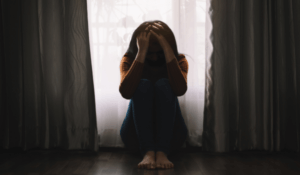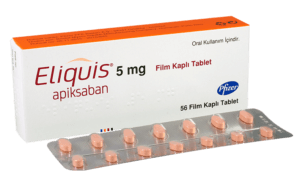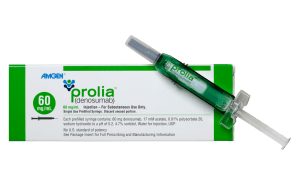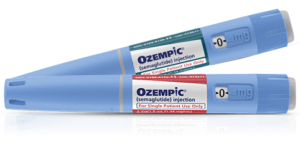
- Experiencing depressed moods, along with a persistent sense of sadness, hopelessness, or feeling “empty.”
- A pervasive sense of sluggishness, low energy, and constant fatigue, which makes even routine tasks feel overwhelming.
- Repeatedy oversleeping (hypersomnia). Unlike typical depression, where insomnia is common, SAD sufferers often sleep excessively but still feel unrested.
- Increased appetite and weight gain, usually caused by an intense craving for carbohydrates.
- A tendency towards social withdrawal, and to self-isolate, avoiding social activities and interactions.
These symptoms don’t just make winter unpleasant; they can disrupt work, relationships, and daily life. The question is, why does this happen in the first place? That brings us to the underlying causes of SAD.
Causes of Seasonal Affective DisorderCauses of Seasonal Affective Disorder
SAD is more than just an emotional response to cold weather and shorter days. At its core, it’s a neurochemical and hormonal reaction to reduced sunlight exposure. While the precise mechanisms aren’t fully understood, research points to several key biological factors:
Disrupted serotonin production
Serotonin, a neurotransmitter that regulates mood, is highly sensitive to light exposure. Studies suggest that decreased sunlight during winter months can lead to lower serotonin levels, increasing the risk of depression. Genetic factors can compound this, as some individuals may have a naturally reduced ability to regulate serotonin levels, making them more susceptible to SAD.
Research indicates that reduced sunlight during winter months can lead to lower serotonin levels, contributing to depressive symptoms. A study highlighted by ScienceDaily found that the serotonin transporter (SERT), which carries serotonin back into nerve cells, has increased activity during darker months. This heightened SERT activity results in reduced active serotonin levels in the brain. The study observed that individuals with Seasonal Affective Disorder (SAD) exhibited a 5% higher SERT level in winter compared to summer, whereas healthy participants showed no significant change.
Additionally, an article from Psychology Today notes that light exposure increases serotonin in humans, with levels being lowest in midwinter and higher on bright days, regardless of the season. This suggests a direct correlation between sunlight exposure and serotonin production, impacting mood regulation.
Melatonin imbalance
Melatonin, the hormone responsible for sleep regulation, is influenced by light exposure. Longer nights and shorter daylight hours can lead to excessive melatonin production, causing increased sleepiness and fatigue. This disrupts circadian rhythms – the body’s internal clock – leading to mood disturbances and lethargy.
Circadian rhythm dysfunction
Our biological clock relies on sunlight cues to regulate sleep, mood, and energy levels. With reduced sunlight in winter, this system is thrown off balance. Many people with SAD experience a phase delay in their circadian rhythm, meaning their sleep-wake cycle shifts to later than usual. This makes it harder to wake up in the morning and increases overall fatigue.
Treatments 
The good news? Seasonal Affective Disorder is highly treatable, and patients have multiple options to mitigate its effects. Treatment strategies typically fall into two main categories: pharmacological (medications) and non-pharmacological (lifestyle, light-based and other interventions).
Pharmacological treatments
For moderate to severe SAD, antidepressant medications are often recommended, particularly selective serotonin reuptake inhibitors (SSRIs). These drugs increase serotonin levels in the brain, helping to counteract the depressive effects of reduced sunlight. Some of the most commonly prescribed medications for SAD include Prozac (fluoxetine), Celexa (citalopram), Paxil (paroxetine), and Zoloft (sertraline). As well, Wellbutrin XL is more specifically approved for the prevention of seasonal depression.
SSRIs generally take four to six weeks to show full effectiveness, making early intervention crucial. Additionally, some people benefit from augmenting their treatment with light therapy (discussed below).
You’ll find a more detailed breakdown of antidepressant medications and how they work on medication for depression and anxiety.
Non-pharmacological treatments
While medications are effective, many patients prefer non-drug interventions, especially if their symptoms are mild to moderate. These approaches include light therapy, outdoor activity, vitamin D supplementation, Cognitive Behavioral Therapy (CBT), and dietary modifications
Light therapy: The gold standard
One of the most well-researched treatments for SAD is light therapy, which involves daily exposure to a bright light box that mimics natural sunlight. The ideal specifications for a light therapy box include:
- 10,000 lux brightness (approximately 20 times stronger than regular indoor lighting)
- Full-spectrum or white LED light (avoiding harmful UV rays)
- 20–30 minutes per session, preferably in the morning
Light therapy works by regulating serotonin and melatonin production, helping to reset circadian rhythms. Many users report significant improvement within a few days to two weeks.
Outdoor exposure & exercise
While artificial light can help, nothing beats the real thing. Spending at least 30 minutes outdoors in natural daylight (even on cloudy days) has been shown to improve mood and energy levels. Additionally, moderate-to-intense exercise, such as brisk walking or jogging, can enhance serotonin production and combat fatigue.
Vitamin D supplementation
Low vitamin D levels have been implicated in depressive disorders, including SAD. Because sunlight is our primary natural source of vitamin D, supplementation can be an effective strategy for those experiencing seasonal depression. Many health experts recommend 1000–2000 IU of vitamin D3 per day, especially during the winter months.
Cognitive Behavioral Therapy (CBT)
CBT has been shown to be an effective treatment for SAD by helping individuals identify and change negative thought patterns. It provides coping strategies that empower patients to manage their symptoms without solely relying on medication or light therapy.
Dietary changes
Eating a balanced diet rich in omega-3 fatty acids, lean protein, and complex carbohydrates has been shown to help stabilize mood. Reducing sugar intake and increasing foods rich in tryptophan (such as turkey, eggs, and nuts) can also support serotonin production. Some non-prescription, over-the-counter dietary supplements are also useful as treatments for mild mental health problems such as SAD. Calmanervin helps in dealing with stressful situations that can lead to anxiety and panic attacks, depression and mood disorders, insomnia, and sleep disorders.
Conclusion
Seasonal Affective Disorder is a real and treatable condition, not just a case of “winter gloom.” Its causes are deeply rooted in the way our brains respond to changes in light exposure that affect serotonin, melatonin, and circadian rhythms. The good news? Whether through medication, light therapy, outdoor activity, vitamin D supplementation, CBT, or changes in diet, there are multiple evidence-based ways to combat SAD and reclaim your energy and mood during the colder months.
If you or someone you know struggles with SAD, seeking professional guidance can make all the difference. Early intervention is key, so don’t wait until winter has already drained your motivation—start addressing symptoms before they take hold. And remember, while winter may be inevitable, suffering through it doesn’t have to be.
Frequently Asked Questions (FAQs)
What are the early warning signs of Seasonal Affective Disorder (SAD)?
SAD often starts subtly, making it difficult to recognize until symptoms become severe. Early warning signs include persistent fatigue, increased sleep duration, lack of motivation, difficulty concentrating, and a decline in social activity. Craving carbohydrates and experiencing unexplained weight gain are also early indicators. Recognizing these signs early allows individuals to implement preventive measures such as increased light exposure, lifestyle modifications, or early intervention with therapy.
How does light therapy help with SAD, and how should it be used?
Light therapy mimics natural sunlight, helping regulate serotonin and melatonin levels. A light therapy box emitting 10,000 lux is typically recommended, with 20–30 minutes of exposure in the morning. It is essential to use it consistently and avoid exposure too late in the day, which can disrupt sleep patterns. Most individuals see improvements within one to two weeks of regular use.
Are there any natural ways to manage SAD without medication?
Yes, lifestyle changes can help significantly. Spending more time outdoors, engaging in regular exercise, adjusting dietary habits to include vitamin D-rich foods, and using light therapy are effective methods. Cognitive Behavioral Therapy (CBT) is another non-pharmacological approach that helps reframe negative thought patterns associated with SAD.
When should someone consider medication for SAD?
Medication should be considered when symptoms become severe, impacting daily functioning, work performance, or relationships. If non-pharmacological treatments prove ineffective, SSRIs or Bupropion may be prescribed. Consulting a mental health professional is the best way to determine if medication is necessary.
Can SAD affect people in warmer climates?
Although more common in the more extreme latitudes, SAD can occur in regions with mild winters due to shifts in daylight exposure. Some individuals experience summer-pattern SAD, which presents with symptoms like anxiety and reduced appetite during warmer months. Understanding the underlying biological rhythms can help tailor treatment approaches.

















